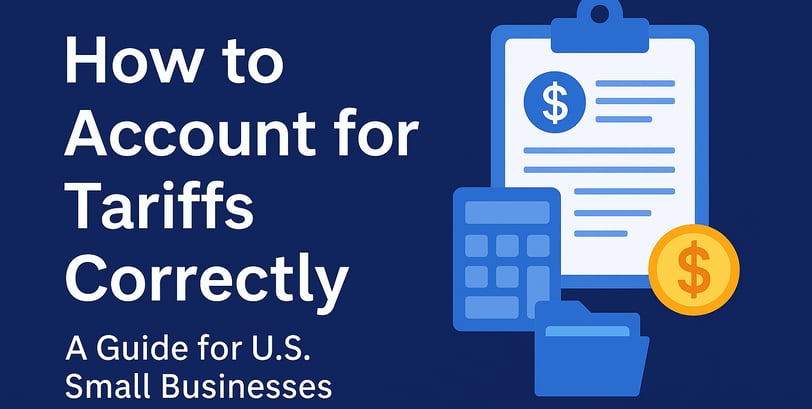How to Account for Tariffs Correctly
Team @ FinAce
4/13/20252 min read


As global trade policies shift, more U.S. small businesses are feeling the sting of increased import tariffs — like the 145% duty recently imposed on some Chinese goods. While these tariffs impact your cash flow, they also have significant accounting and tax implications. Yet many small business owners aren’t sure how to properly record tariffs — and mistakes here can distort your profit margins, misstate inventory, and even trigger IRS red flags.
Let’s break down how to account for tariffs correctly — and what you need to know to keep your financials accurate.
What Are Tariffs, Really?
Tariffs are import taxes levied by the government on goods brought in from other countries. You pay them at the border, often as part of the customs clearance process. But unlike typical operating expenses (like office supplies or software subscriptions), tariffs are part of your product’s landed cost — meaning they should be capitalized as inventory until the product is sold.
Where Tariffs Belong in Your Books?
Here’s the golden rule: Tariffs are not an expense. They’re part of inventory.
That means when you buy goods from abroad and pay a tariff, you add the tariff cost to your inventory value — not to your expense accounts.
Accounting (Accrual Basis):
When goods are received:
Dr Inventory (or Purchases) $11,500
Cr Accounts Payable / Cash $11,500
You import $10,000 worth of goods and pay $1,500 in tariffs
When goods are sold:
Dr Cost of Goods Sold $11,500
Cr Inventory $11,500
This matches the tariff to the revenue generated — keeping your gross margin accurate.
Tariffs are just one part of what’s called landed cost — which also includes freight, insurance, handling fees, and customs charges. If you’re importing a container with multiple SKUs, it’s smart to allocate the tariff cost proportionally across the items based on value or volume.
Common Tariff Accounting Mistakes
Here are a few mistakes to avoid (and we see them often!):
❌ Recording tariffs under “Taxes & Licenses” or “Duties Expense”
❌ Forgetting to adjust inventory cost
❌ Expensing tariffs immediately (cash basis)
At FinAce Global, we help small businesses simplify accounting and build smarter systems for cost tracking, inventory management, and tax strategy. We speak fluent QuickBooks, Xero, and Office365 — and we’re here to help.
Final Thought
Tariffs are more than a policy headline — they’re a line item that affects your bottom line. By accounting for them properly, you can protect your margins, stay compliant, and make better business decisions.
Need help? just ask.
subscribe for more
+1 202 644 1306
© 2025. All rights reserved.
